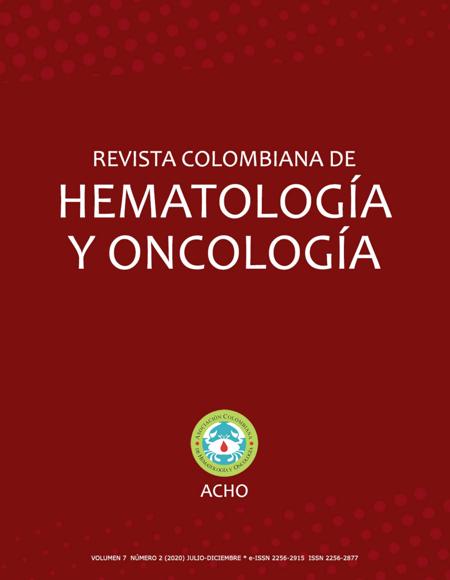Craneofaringioma en pediatría : diagnóstico y tratamiento.
Craniopharyngioma in pediatrics: diagnosis and treatment

Cómo citar
Descargar cita

Esta obra está bajo una licencia internacional Creative Commons Atribución-NoComercial-SinDerivadas 4.0.
Mostrar biografía de los autores
Los craneofaringiomas (CF) son tumores raros de baja malignidad histológica, que surgen a lo largo del conducto craneofaríngeo. Los dos subtipos histológicos, craneofaringioma adamantinomatoso (CFA) y papilar (CFP), difieren en su origen y distribución por edad. Los CFA se diagnostican con un pico de incidencia bimodal (5–15 años y 45–60 años), mientras que los CFP se presentan exclusivamente en adultos, principalmente en la quinta y sexta décadas de la vida. Los CFA son generados por mutaciones somáticas en CTNNB1, codificador de β-catenina y son predominantemente de aspecto quístico. Los CFP albergan mutaciones somáticas en BRAF V600E y son típicamente tumores sólidos. Las manifestaciones clínicas de hipertensión endocraneana, compromiso visual o deficiencias endocrinas, sirven de alerta para solicitar imágenes. El tratamiento comprende generalmente neurocirugía y radioterapia (RT); la quimioterapia intraquística se usa en el CFA monoquístico. Aunque la supervivencia a largo plazo es alta, con frecuencia se ven afectadas la calidad de vida y la función neuropsicológica, debido a la proximidad anatómica al quiasma óptico, el hipotálamo y la glándula pituitaria. La afectación hipotalámica por el tumor y las lesiones secundarias al tratamiento, con frecuencia resultan en obesidad hipotalámica y déficits neuropsicosociales.
Visitas del artículo 4283 | Visitas PDF 4797
Descargas
- Buslei R, Rushing EJ, et al. Craniopharyngioma. En: Louis DN, Ohgaki H, Wiestler OD, Cavenee WK, editors. WHO Classification of Tumours of the Central Nervous System. Revised 4th ed. France: International Agency for Research on Cancer; 2016. 328 p.
- Müller HL, Merchant TE, Warmuth-Metz M, Martinez-Barbera JP, Puget S. Craniopharyngioma. Nat Rev Dis Primers [Internet]. 2019;5:75 https://doi.org/10.1038/s41572-019-0133-9
- Bunin GR, Surawicz TS, Witman PA, Preston-Martin S, Davis F, Bruner M. The descriptive epidemiology of craniopharyngioma. J. Neurosurg [Internet]. 1998; 89:547–551. https://doi.org/10.3171/jns.1998.89.4.0547
- Olsson DS, Andersson E, Bryngelsson IL, Nilsson AG, Johannsson G. Excess mortality and morbidity in patients with craniopharyngioma, especially in patients with childhood onset: a population- based study in Sweden. J. Clin. Endocrinol. Metab [Internet]. 2015;100:467–474. https://doi.org/10.1210/jc.2014-3525
- Zacharia BE, Bruce SS, Goldstein H, Malone HR, Neugut AI, Bruce J. Incidence, treatment and survival of patients with craniopharyngioma in the Surveillance, Epidemiology and End Results program. Neuro Oncol [Internet]. 2012;14:1070–1078. https://doi.org/10.1093/neuonc/nos142
- Makino K, Nakamura H, Yano S, Kuratsu J, Kumamoto Brain Tumor Group. Population- based epidemiological study of primary intracranial tumors in childhood. Childs Nerv. Syst [Internet]. 2010;26:1029–1034. https://doi.org/10.1007/s00381-010-1126-x
- Rosemberg S, Fujiwara D. Epidemiology of pediatric tumors of the nervous system according to the WHO 2000 classification: a report of 1,195 cases from a single institution. Childs Nerv. Syst [Internet]. 2005;21:940–944. https://doi.org/10.1007/s00381-005-1181-x
- Nielsen EH, Feldt-Rasmussen U, Poulsgaard L, Kristensen LO, Astrup J, Jørgensen JO, et al. Incidence of craniopharyngioma in Denmark (n = 189) and estimated world incidence of craniopharyngioma in children and adults. J. Neurooncol [Internet]. 2011;104:755–763. https://doi.org/10.1007/s11060-011-0540-6
- Larkin SJ, Ansorge O. Pathology and pathogenesis of craniopharyngiomas. Pituitary [Internet]. 2013;16:9-17. https://doi.org/10.1007/s11102-012-0418-4
- Muller-Scholden J, Lehrnbecher T, Müller HL, Bensch J, Hengen RH, Sörensen N, et al. Radical surgery in a neonate with craniopharyngioma. Report of a case. Pediatr. Neurosurg [Internet]. 2000;33:265–269. https://doi.org/10.1159/000055967
- Bailey W, Freidenberg GR, James HE, Hesselink JR, Jones KL. Prenatal diagnosis of a craniopharyngioma using ultrasonography and magnetic resonance imaging. Prenat. Diagn [Internet]. 1990;10:623–629. https://doi.org/10.1002/pd.1970101002
- Chentli F, Belhimer F, Kessaci F, Mansouri, B. Congenital craniopharyngioma: a case report and literature review. J. Pediatr. Endocrinol. Metab [Internet]. 2012; 25:1181–1183. https://doi.org/10.1515/jpem-2012-0251
- Crotty TB, Scheithauer BW, Young WF, Davis DH, Shaw EG, Miller GM, et al. Papillary craniopharyngioma: a clinicopathological study of 48 cases. J. Neurosurg [Internet]. 1995;83:206–214. https://doi.org/10.3171/jns.1995.83.2.0206
- Karavitaki N, Wass J. Craniopharyngiomas. Endocrinol Metab Clin N Am [Internet]. 2008;37:173–193. https://doi.org/10.1016/j.ecl.2007.10.012
- Garnett MR, Puget S, Grill J, Sainte- Rose C. Craniopharyngioma. Orphanet Journal of Rare Diseases [Internet]. 2007;2:18. https://doi.org/10.1186/1750-1172-2-18
- Boch AL, van Effenterre, R, Kujas M. Craniopharyngiomas in two consanguineous siblings: case report. Neurosurgery [Internet]. 1997;41:1185–1187. https://doi.org/10.1097/00006123-199711000-00031
- Green AL, Yeh JS, Dias PS. Craniopharyngioma in a mother and daughter. Acta Neurochir [Internet]. 2002;144:403–404. https://doi.org/10.1007/s007010200058
- Pereira AM, Schmid EM, Schutte PJ, Voormolen JH, Biermasz NR, van Thiel SW, et al. High prevalence of long- term cardiovascular, neurological and psychosocial morbidity after treatment for craniopharyngioma. Clin. Endocrinol [Internet]. 2005;62:197–204. https://doi.org/10.1111/j.1365-2265.2004.02196.x
- Muller HL, Bueb K, Bartels U, Roth C, Harz K, Graf N, et al. Obesity after childhood craniopharyngioma - German multicenter study on pre- operative risk factors and quality of life. Klin. Padiatr [Internet]. 2001;13:244–249. https://doi.org/10.1055/s-2001-16855
- Poretti A, Grotzer MA, Ribi K, Schonle E, Boltshauser E. Outcome of craniopharyngioma in children: long- term complications and quality of life. Dev. Med. Child Neurol [Internet]. 2004;46:220–229. https://doi.org/10.1017/s0012162204000374
- Visser J, Hukin J, Sargent M, Steinbok P, Goddard K, Fryer C. Late mortality in pediatric patients with craniopharyngioma. J. Neurooncol [Internet]. 2010; 100:105–111 (2010). https://doi.org/10.1007/s11060-010-0145-5
- Hoffmann, A. et al. Fusiform dilatation of the internal carotid artery in childhood- onset craniopharyngioma: multicenter study on incidence and long- term outcome. Pituitary [Internet]. 2016;19,422–428.
- Wijnen M, Olsson DS, van der Heuvel-Eibrink MM, Hammarstrand C, Lanssen J, et al. Excess morbidity and mortality in patients with craniopharyngioma: a hospital- based retrospective cohort study. Eur. J. Endocrinol [Internet]. 2018; 178:93–102. https://doi.org/10.1530/eje-17-0707
- Wijnen M, Olsson DS, van der Heuvel-Eibrink MM, Hammarstrand C, Lanssen J, et al. The metabolic syndrome and its components in 178 patients treated for craniopharyngioma after 16 years of follow- up. Eur. J. Endocrinol [Internet]. 2018;178:11–22. https://doi.org/10.1530/eje-17-0387
- Wijnen M, van der Heuvel-Eibrink MM, Lanssen J, Castman-Berrevoets CE, Michiels EM, et al. Very long- term sequelae of craniopharyngioma. Eur. J. Endocrinol [Internet]. 2017;176:755–767. https://doi.org/10.1530/eje-17-0044
- Holmer H, Popovic V, Ekman B, Follin C, Siversson AB, Esfurth EM. Hypothalamic involvement and insufficient sex steroid supplementation are associated with low bone mineral density in women with childhood onset craniopharyngioma. Eur. J. Endocrinol [Internet]. 2011;165:25–31. https://doi.org/10.1530/eje-11-0229
- Hoffmann A, Bootsveld K, Gebhardt Um Daubenbüchel AM, Sterkenburg AS, Müller HL. Nonalcoholic fatty liver disease and fatigue in long- term survivors of childhood- onset craniopharyngioma. Eur. J. Endocrinol [Internet]. 2015; 173:389–397. https://doi.org/10.1530/eje-15-0422
- Heinks K, De Schutter-Nüsse C, Boekhoff S, Bogusz A, Zhu J, Peng J, et al. Periostin concentrations in childhoodonset craniopharyngioma patients. J. Endocrinol. Invest [Internet]. 2019;42:815–824. https://doi.org/10.1007/s40618-018-0987-9
- Erfurth EM, Holmer H, Fjalldal SB. Mortality and morbidity in adult craniopharyngioma. Pituitary [Internet] 2013;16:46–55. https://doi.org/10.1007/s11102-012-0428-2
- Sekine S, Shibata T, Kokubu A, Morishita Y, Noguchi M, Nakanishi Y, et al. Craniopharyngiomas of adamantinomatous type harbor beta- catenin gene mutations. Am. J. Pathol [Internet]. 2002;161:1997–2001. https://doi.org/10.1016/s0002-9440(10)64477-x
- Buslei R, Nolde M, Hofmann B, Meissner S, Eyupoglu IY, Siebzehnrübl F, et al. Common mutations of β- catenin in adamantinomatous craniopharyngiomas but not in other tumours originating from the sellar region. Acta Neuropathol [Internet]. 2005;109:589–97. https://doi.org/10.1007/s00401-005-1004-x
- Brastianos PK, Taylor-Weiner A, Manley PE, Jones RT, Dias-Santagata D, Thorner AR, et al. Exome sequencing identifies BRAF mutations in papillary craniopharyngiomas. Nat. Genet [Internet]. 2014;46:161–165. https://doi.org/10.1038/ng.2868
- Hölsken A, Buchfelder M, Fahlbusch, Blümcke I, Buslei R. Tumour cell migration in adamantinomatous craniopharyngiomas is promoted by activated Wnt-signalling. Acta Neuropathol [Internet]. 2010;119:631–639. https://doi.org/10.1007/s00401-010-0642-9
- Gaston-Massuet C, Andoniadoua CL, Signore M, Jayakodya SA, Charolidi N, Kyeyune R, et al. Increased Wingless (Wnt) signaling in pituitary progenitor/stem cells gives rise to pituitary tumors in mice and humans. Proc Natl Acad Sci USA [Internet]. 2011; 108(28):11282-7. https://doi.org/10.1073/pnas.1101553108
- Apps JR, Carreño G, González-Meljem JM, Haston S, Guiho R, Cooper JE, et al. Tumour compartment transcriptomics demonstrates the activation of inflammatory and odontogenic programmes in human adamantinomatous craniopharyngioma and identifies the MAPK/ERK pathway as a novel therapeutic target. Acta Neuropathol [Internet]. 2018;135(5):757–777. https://doi.org/10.1007/s00401-018-1830-2
- Andoniadou CL, Gaston-Massuet C, Reddy R, Schneider RP, Blasco MA, Le Tissier P, et al. Identification of novel pathways involved in the pathogenesis of human adamantinomatous craniopharyngioma. Acta Neuropathol [Internet]. 2012;124(2):259–271. https://doi.org/10.1007/s00401-012-0957-9
- Carreno G, Boult JKR, Apps J, González-Meljem JM, Haston S, Guiho R, Stache C, et al. SHH pathway inhibition is protumourigenic in adamantinomatous craniopharyngioma. Endocr. Relat. Cancer [Internet]. 2019;26(3):355–366. https://doi.org/10.1530/erc-18-0538
- Goschzik, T, Gwaae M, Dreschmann V, Gebhardt U, Wang L, Yamaguchi S, et al. Genomic alterations of adamantinomatous and papillary craniopharyngioma. J. Neuropathol. Exp. Neurol [Internet]. 2017;76(2):126–134. https://doi.org/10.1093/jnen/nlw116
- Holsken A, Sill M, Merkle J, Schweizer L, Buchfelder M, Flitsch J, et al. Adamantinomatous and papillary craniopharyngiomas are characterized by distinct epigenomic as well as mutational and transcriptomic profiles. Acta neuropathol Commun [Internet]. 2016;4:20. https://doi.org/10.1186/s40478-016-0287-6
- Haston S, Pozzi S, Carreno G, Manshaer S, Paousopoloulos L, González-Meljem JM, et al. MAPK pathway control of stem cell proliferation and differentiation in the embryonic pituitary provides insights into the pathogenesis of papillary craniopharyngioma. Development [Internet]. 2017;144(12):2141–2152. https://doi.org/10.1242/dev.150490
- Müller HL, Emser A, Faldum A, Bruhnken G, Etavard-Gorris N, Gebhardt U, et al. Longitudinal study on growth and body mass index before and after diagnosis of childhood craniopharyngioma. J. Clin. Endocrinol. Metab [Internet]. 2004; 89(7):3298–3305. https://doi.org/10.1210/jc.2003-031751
- Hoffmann A, Boekhoff S, Gebhardt U, Sterkenburg AS, Daubenbüchek AMM, Eveslage M, et al. History before diagnosis in childhood craniopharyngioma: associations with initial presentation and long-term prognosis. Eur J Endocrinol [Internet]. 2015;173(6):853-862. https://doi.org/10.1530/eje-15-0709
- Prieto R, Pascual JM, Barrios L. Optic chiasm distortions caused by craniopharyngiomas: clinical and magnetic resonance imaging correlation and influence on visual outcome. World Neurosurg [Internet]. 2015;83(4):500–529. https://doi.org/10.1016/j.wneu.2014.10.002
- Müller HL. Childhood Craniopharyngioma. Horm Res [Internet]. 2008;69:193–202. https://doi.org/10.1159/000113019
- Zhou L, Luo L, Xu J, Chen J, Jiang S, Cai B, et al. Craniopharyngiomas in the posterior fossa: a rare subgroup, diagnosis, management and outcomes. J Neurol Neurosurg Psychiatry [Internet]. 2009;80(10):1150-1155. https://doi.org/10.1136/jnnp.2008.149088
- Elliott RE, Jane JAJr, Wisoff JH. Surgical management of craniopharyngiomas in children: meta- analysis and comparison of transcranial and transsphenoidal approaches. Neurosurgery [Internet]. 2011;69(3):630–643. https://doi.org/10.1227/neu.0b013e31821a872d
- Muller, H. L. Childhood craniopharyngioma. Recent advances in diagnosis, treatment and follow- up. Horm. Res [Internet]. 2008;69(4):193–202. https://doi.org/10.1159/000113019
- Hoffman HJ, De Silva M, Humphreys RP, Drake JM, Smith ML, Blaser SI. Aggressive surgical management of craniopharyngiomas in children. J. Neurosurg [Internet]. 1992;76(1):47–52. https://doi.org/10.3171/jns.1992.76.1.0047
- Roth CL, Gebhardt U, Müller HL. Appetite-regulating hormone changes in patients with craniopharyngioma. Obesity [Internet]. 2011;19(1):36–42. https://doi.org/10.1038/oby.2010.80
- Kilday JP, Bartels U, Huang A, Barron M, Shago M, Mistry M, et al. Favorable survival and metabolic outcome for children with diencephalic syndrome using a radiation- sparing approach. J. Neurooncol [Internet]. 2014; 116(1):195–204. https://doi.org/10.1007/s11060-013-1284-2
- Hoffmann A, Gebhardt U, Sterkenburg AS, Warmuth- Metz M, Müller HL. Diencephalic syndrome in childhood craniopharyngioma- results of german multicenter studies on 485 long- term survivors of childhood craniopharyngioma. J. Clin. Endocrinol. Metab [Internet]. 2014;99(11):3972–3977. https://doi.org/10.1210/jc.2014-1680
- Rossi A, Cama A, Consales A, Gandolfo C, Garrè ML, Milanaccio C, et al. Neuroimaging of pediatric craniopharyngiomas: a pictorial essay. J. Pediatr. Endocrinol. Metab. 2006; 19(Suppl 1):299–319. PMID: 16700305
- Hoffmann A, Brentrup A, Muller HL. First report on spinal metastasis in childhood- onset craniopharyngioma. J. Neurooncol [Internet]. 2016;129(1):193–194. https://doi.org/10.1007/s11060-016-2160-7
- Kordes U, Flitsch CH, Goebell E, Rchwarz R, Herberhold A, von Bueren AO, et al. Ectopic craniopharyngioma. Klin. Padiatr [Internet]. 2011;223(3):176–177. https://doi.org/10.1055/s-0031-1273743
- Warmuth-Metz M, Gnekow AK, Muller H, Solymosi L. Differential diagnosis of suprasellar tumors in children. Klin Padiatr [Internet]. 2004;216(6):323-330. https://doi.org/10.1055/s-2004-832358
- Prieto R, Pascual JM, Hofecker V, Winter E, Castro-Dufourny I, Carrasco R, et al. Craniopharyngioma adherence: a reappraisal of the evidence. Neurosurg. Rev [Internet]. 2018;43:453-472. https://doi.org/10.1007/s10143-018-1010-9.
- Hill TK, Baine MJ, Verma V, Alam M, Lyden ER, Lin C, et al. Patterns of care in pediatric craniopharyngioma: outcomes following definitive radiotherapy. Anticancer Res [Internet]. 2019;39(2):803–807. https://doi.org/10.21873/anticanres.13178
- Cavalheiro S, Di Rocco C, Valenzuela S, Dastoli PA, Tamburrini G, Massimi L, et al. Craniopharyngiomas: intratumoral chemotherapy with interferon-alpha: a multicenter preliminary study with 60 cases. Neurosurg Focus [Internet]. 2010; 28(4):E12. https://doi.org/10.3171/2010.1.focus09310
- Kilday JP, Caldarelli M, Massimi L, Chen RH, Lee YY, Liang M, et al. Intracystic interferon-alpha in pediatric 434 craniopharyngioma patients: an international multicenter assessment on behalf of SIOPE and 435 ISPN. Neuro Oncol [Internet]. 2017;19(10):1398-1407. https://doi.org/10.1093/neuonc/nox056
- Zhang S, Fang Y, Cai BW, Xu JG, You C. Intracystic bleomycin for cystic craniopharyngiomas in children. Cochrane Database Syst [Internet]. 2016; 7(7):CD008890. https://doi.org/10.1002/14651858.cd008890.pub4
- Adeberg S, Harrabi SB, Bougatf N, Verma V, Windisch P, Bernhardt D, et al. Dosimetric Comparison of Proton Radiation Therapy, Volumetric Modulated Arc Therapy, and Three-Dimensional Conformal Radiotherapy Based on Intracranial Tumor Location. Cancers [Internet]. 2018;10(11):401. https://doi.org/10.3390/cancers10110401
- Müller HL. Hypothalamic involvement in craniopharyngioma — implications for surgical, radiooncological, and molecularly targeted treatment strategies. Pediatr. Blood. Cancer [Internet]. 2018;65(5):e26936. https://doi.org/10.1002/pbc.26936
- Merchant TE, Hua C-H, Sabin ND, Wu S, Khan RB, Indelicato, et al. Necrosis, vasculopathy, and neurological complications after proton therapy for childhood craniopharyngioma: Results from a prospective trial and a photon cohort comparison. Int J Rad Biol Oncol Phys [Internet]. 2016;96(2):S12- S121. https://doi.org/10.1016/j.ijrobp.2016.06.294
- Merchant T, Indelicato D, Hua C, Wu S, Conklin 430 H. Comparison of academic scores after proton and photon therapy in children and young adults with craniopharyngioma. Pediatr Blood Cancer [Internet]. 2017;64:e2677.
- Muller HL, Gebhardt U, Faldum A, Warmuth-Metz M, Pietsch T, Pohl F, et al. Xanthogranuloma, Rathke's cyst, and childhood craniopharyngioma: results of prospective multinational studies of children and adolescents with rare sellar malformations. J. Clin. Endocrinol. Metab [Internet]. 2012;97(11):3935–3943. https://doi.org/10.1210/jc.2012-2069
- Muller HL, Gebhardt U, Teske C, Faldum A, Zwiener I, Warmuth-Metz M, et al. Post- operative hypothalamic lesions and obesity in childhood craniopharyngioma: results of the multinational prospective trial KRANIOPHARYNGEOM 2000 after 3-year follow- up. Eur. J. Endocrinol [Internet]. 2011;165(1):17–24. https://doi.org/10.1530/eje-11-0158
- Hankinson TC, Palmeri NO, Williams SA, Torok MR, Serramo CA, Foreman NK, et al. Patterns of care for craniopharyngioma: survey of members of the American Association of Neurological Surgeons. Pediatr. Neurosurg [Internet]. 2013; 49(3):131–136. https://doi.org/10.1159/000357783
- Schwartz TH. A role for centers of excellence in transsphenoidal surgery. World Neurosurg [Internet]. 2013;80(3):270–271. https://doi.org/10.1016/j.wneu.2012.11.019
- Tallen G, Resch A, Calaminus G, Wiener A, Leiss U, Pletschko T, et al. Strategies to improve the quality of survival for childhood brain tumour survivors. Eur. J. Paediatr. Neurol [Internet]. 2015;19(6):619–639. https://doi.org/10.1016/j.ejpn.2015.07.011
- Müller HL, Reichel J, Boekhoff S, Warmuth-Metz M, Eveslage M, Peng J, et al. Low concordance between surgical and radiological assessment of degree of resection and treatment- related hypothalamic damage: results of KRANIOPHARYNGEOM 2007. Pituitary [Internet]. 2018;21(4),371–378. https://doi.org/10.1007/s11102-018-0883-5
- Gump JM, Donson AM, Birks DK, Amani VM, Rao KK,Griesinger AM, et al. Identification of targets for rational pharmacological therapy in childhood craniopharyngioma. Acta Neuropathol. Commun [Internet]. 2015;3:30. https://doi.org/10.1186/s40478-015-0211-5
- Rimkus TK, Carpenter RL, Qasem S, Chan M, Lo HW. Targeting the sonic hedgehog signaling pathway: review of Smoothened and GLI inhibitors. Cancers [Internet]. 2016;8(2):E22. https://doi.org/10.3390/cancers8020022
- Sekulic A, Migden MR, Basset-Seguin N, Garbe C, Geiesrich A, Lao CD, et al. Long- term safety and efficacy of vismodegib in patients with advanced basal cell carcinoma: final update of the pivotal ERIVANCE BCC study. BMC Cancer [Internet]. 2017;17(1):332. https://doi.org/10.1186/s12885-017-3286-5
- Miller C, Guillaume D, Dusenbery K, Clark HB, Moertel C. Report of effective trametinib therapy in 2 children with progressive hypothalamic optic pathway pilocytic astrocytoma: documentation of volumetric response. J. Neurosurg. Pediatr [Internet]. 2017;19(3):319–324. https://doi.org/10.3171/2016.9.peds16328
- Robert C, Flaherty KT, Hersey P, Nathan PD, Garbe C, Milhem MM, et al. METRIC phase III study: efficacy of trametinib (T), a potent and selective mek inhibitor (MEKi), in progression- free survival (PFS) and overall survival (OS), compared with chemotherapy (C) in patients (pts) with BRAFV600/k mutant advanced or metastatic melanoma (MM). J. Clin. Oncol [Internet]. 2012;30(18 Suppl) LBA8509. https://doi.org/10.1200/jco.2012.30.18_suppl.lba8509
- Grob S, Mirsky DM, Donson AM, Dahl N, Foreman NK, Hoffman LM, et al. Targeting IL-6 is a potential treatment for primary cystic craniopharyngioma. Front. Oncol [Internet]. 2019;9:791. https://dx.doi.org/10.3389%2Ffonc.2019.00791
- Ismail D, O'Connell MA, Zacharin MR. Dexamphetamine use for management of obesity and hypersomnolence following hypothalamic injury. J. Pediatr. Endocrinol. Metab [Internet]. 2006;19(2):129–134. https://doi.org/10.1515/jpem.2006.19.2.129
- Eveslage M, Calaminus G, Warmuth-Metz M, Kortmann R, Pohl F, Timmermann B, et al. The postoperative quality of life in children and adolescents with craniopharyngioma. Dtsch Arztebl. Int [Internet]. 2019;116(18);321–328. https://dx.doi.org/10.3238%2Farztebl.2019.0321

















